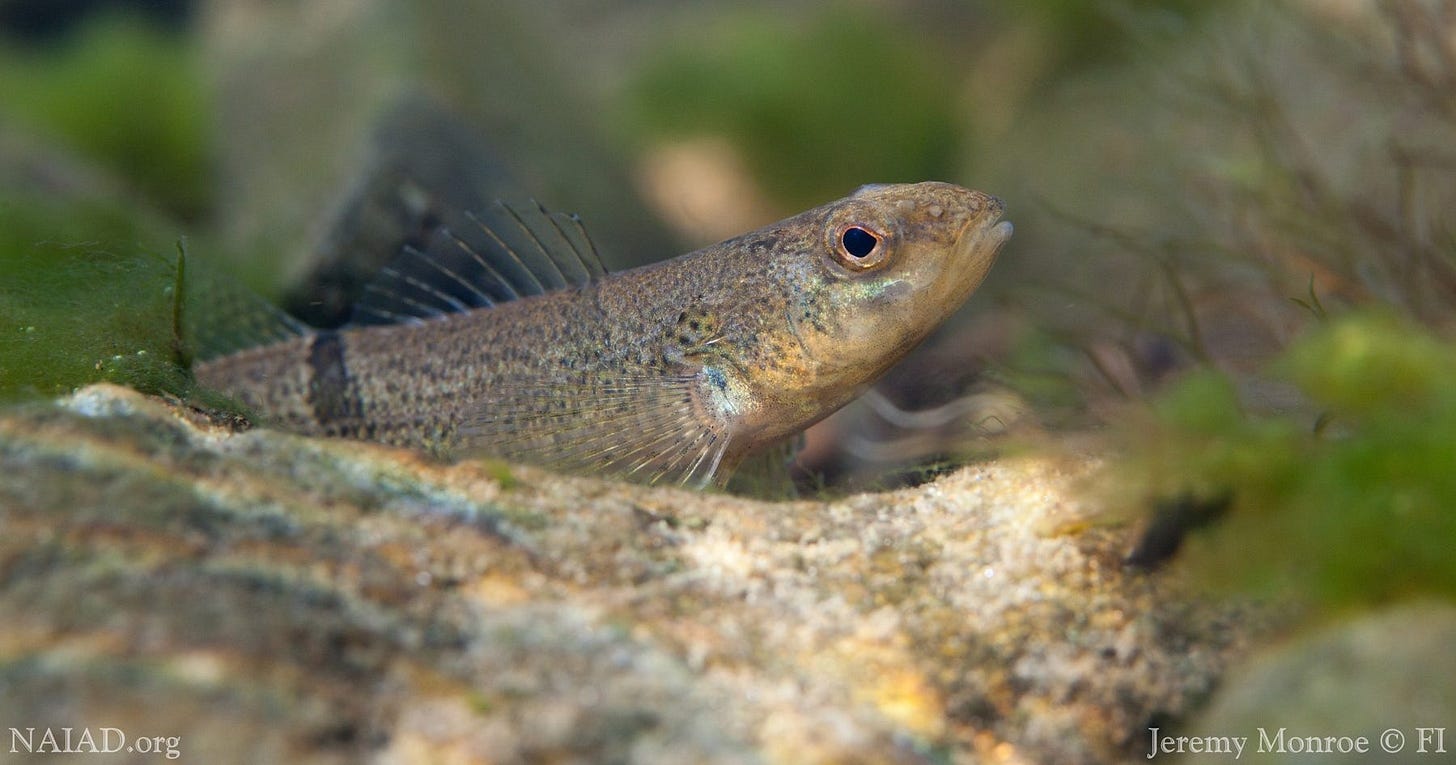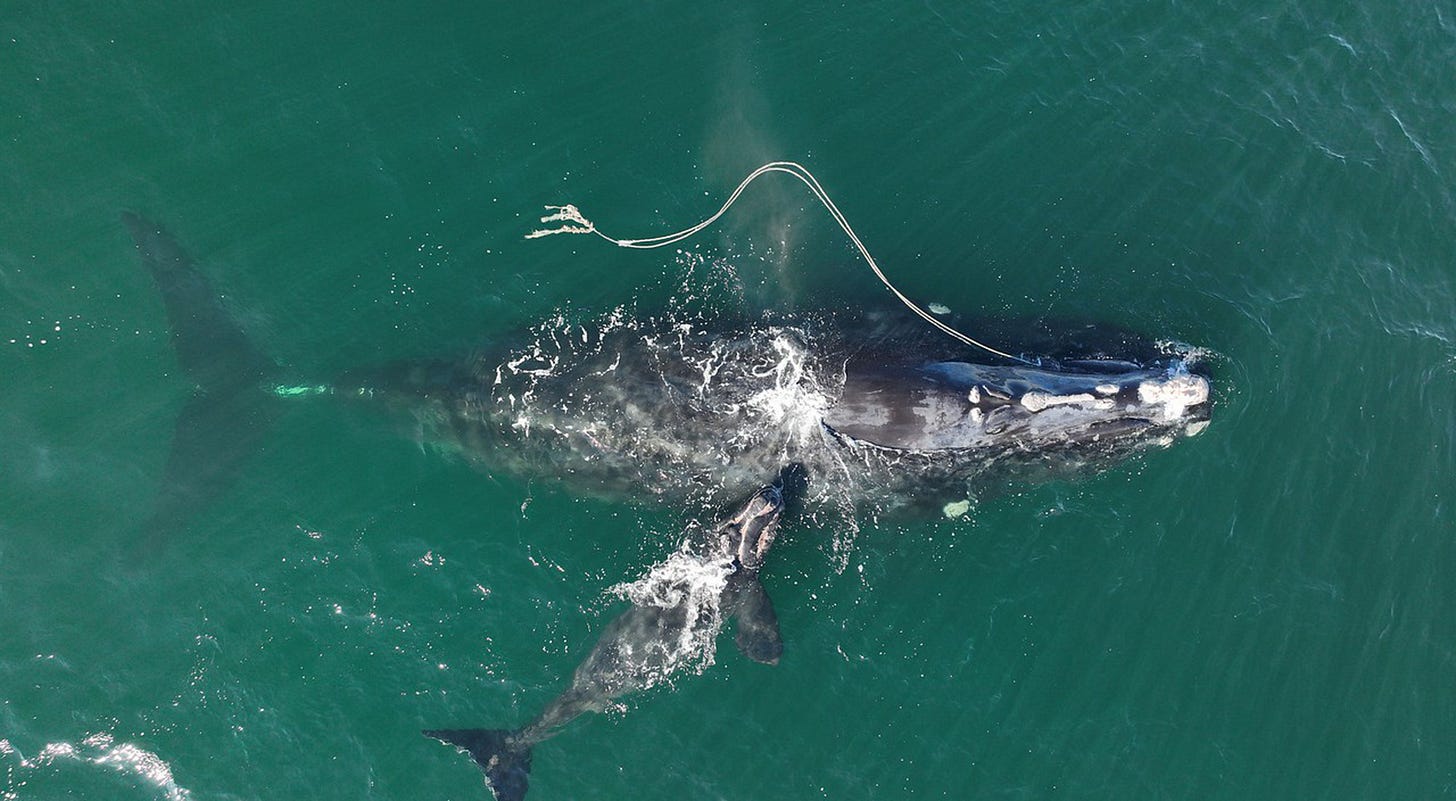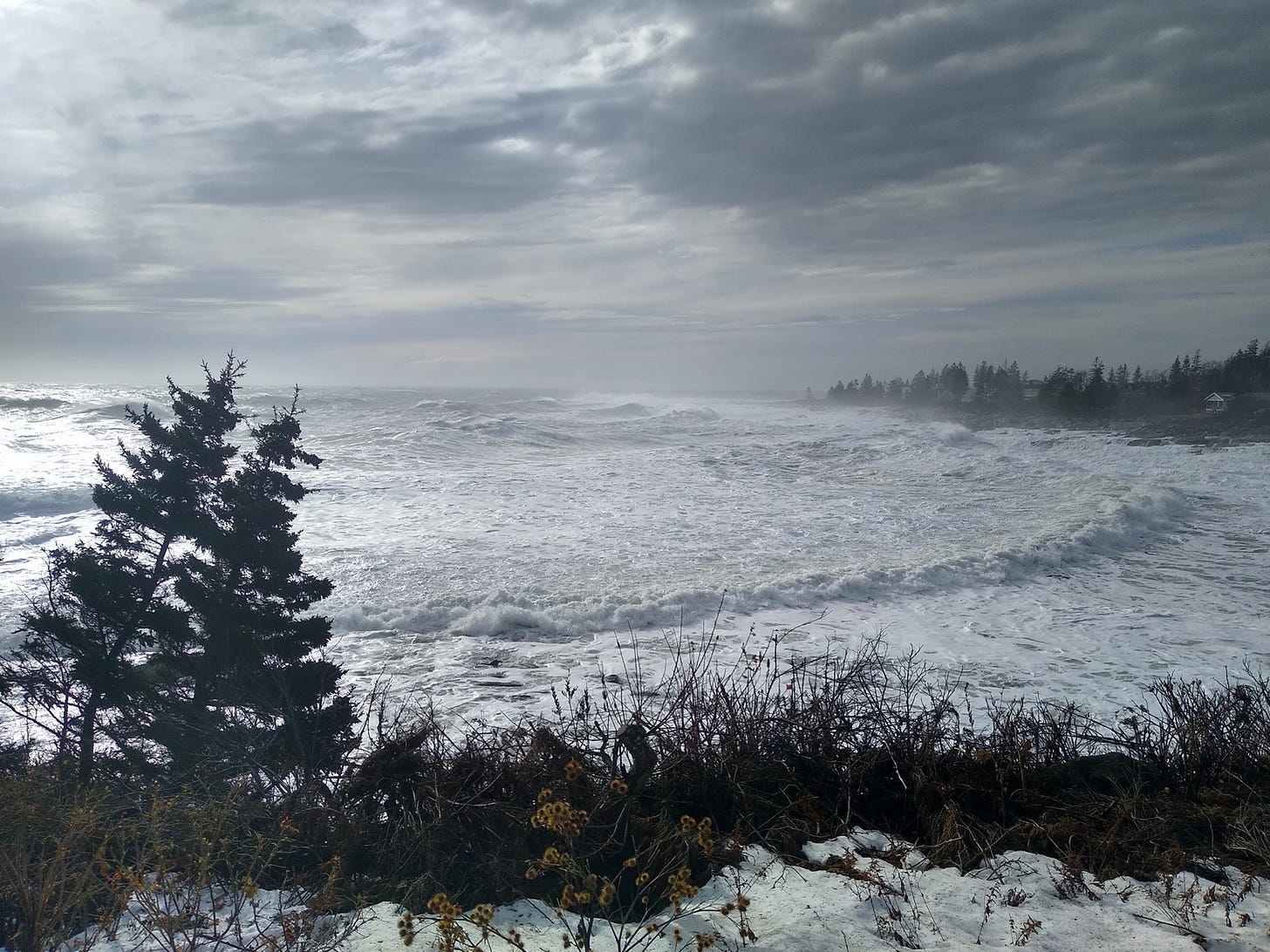Hello everyone:
As always, please remember to scroll past the end of the essay to read some curated Anthropocene news. You’ll find a larger-than-normal list of important stuff this week.
Now on to this week’s writing:
Keeping with my New Year’s resolution theme from last week – “Promises to Keep” – let’s look at what’s making it harder to keep our Endangered Species Act promises, and then segue to a path forward through the chaos.
First, though, I’ll remind you that the Endangered Species Act (ESA) has been enormously successful for a host of species. Some classic examples include bald eagles, alligators, grizzly bears, gray wolves, Florida panthers, whooping cranes, green sea turtles, and peregrine falcons, all of whom have recovered from a sure path to extinction to some form of stable population. Many of these wins are modest, certainly, and they may all falter in a hotter world alongside 10 billion equally threatened humans. But along with many other less charismatic species (Furbish’s Lousewort and the Okaloosa Darter, for example) for whom the ESA has meant salvation, they represent the survival of another endangered species: the better angels of our nature.
For a deeper dive into the last fifty years, High Country News has an excellent by-the-numbers article that nicely demonstrates the successes and challenges of the ESA, including a comparison of species saved vs. species lost to extinction. The USFWS offers a complete list of delisted species, whether because they recovered or went extinct.
And the Dept. of Interior offers a nice summary of why the ESA exists:
The ESA was enacted in 1973 as a response to the declining populations of many species of animals and plants. The Act was designed to protect and recover species at risk of extinction and to promote the conservation of ecosystems and habitats necessary for the survival of those species. Each of these species is a part of the web of life, each with a unique cultural and biological community, performing services that are essential to our combined well-being. By conserving them, guided by the best-available science, we help protect healthy air, land, and water for everyone.
As I mentioned last week, the ESA was born in the early 1970s, in a brief and vital era of bipartisan environmentalism. Its siblings include the Marine Mammal Protection Act, the Clean Air Act and Clean Water Act, and the Environmental Protection Agency. The ESA passed the Senate unanimously and lost only a few votes in the House. It was the dawn of a new age of environmental regulation, a new age of promises to other species.
Fifty years later, though, this legislative history reads like a fairy tale. Today, the protection of endangered species is often politicized and divisive. Conservatives are generally aligned against the strictures of the regulation, and normal politics in the House include certain Republican members devoting themselves to a disturbingly intense campaign to weaken or gut the ESA through any means necessary.
The historian and famed diarist of American democracy Heather Cox Richardson (a neighbor of ours here in Maine) explained recently how that political shift happened. “In environmental regulations,” she writes, “the federal government’s protection of the public good ran smack into economic development.”
The timeline starts, more or less, with the end of Jimmy Carter’s presidency and the arrival of Ronald Reagan. Carter had pushed environmental protections, most notably in Alaska, where he shielded 56 million acres with national monuments and conserved over 100 million acres with the Alaska National Interest Land Conservation Act. Then, as Richardson reminds us, Carter left us a warning in his farewell address:
“There are real and growing dangers to our simple and our most precious possessions: the air we breathe, the water we drink, and the land which sustains us,” he warned. “The rapid depletion of irreplaceable minerals, the erosion of topsoil, the destruction of beauty, the blight of pollution, the demands of increasing billions of people, all combine to create problems which are easy to observe and predict, but difficult to resolve. If we do not act, the world of the year 2000 will be much less able to sustain life than it is now.”
Twenty-four years into the 21st century, it’s easy to observe how correct Carter was, how many of those trends continue to worsen, and how fiercely opposition to such sweeping conservation efforts has grown among business interests and their political allies. Fossil fuel companies, in particular, were (and still are) opposed to the Alaskan protections. Reagan came into office swinging, appointing people to the Dept. of Interior and the EPA whose main purpose was to weaken the ability of government to fulfill its promises to the environment.
There have been flashpoints in the story of the ESA, years-long battles to protect certain species that galvanized industry and conservative voters against what they see as environmental extremism, and which they depict as ridiculous and heartless governmental intervention in the working lives of ordinary people. As another of those excellent Mother Jones articles I cited last week explains, it began with a tiny fish, a species of snail darter, whose discovery in 1973 threatened the completion of the $116 million hydroelectric Tellico Dam project in Tennessee.
At the time, Roman explains, it was the only place on Earth known to host the fish. If the dam were to be completed, scientists believed it would wipe out the entire species. The question of whether the dam could be built went all the way up to the Supreme Court, which ruled unanimously in favor of the fish.
Yet Congress, in a bipartisan 1979 vote, passed an exemption to the ESA that excluded the Tellico Dam. It was signed by Jimmy Carter. The darters were moved to another river and the dam was completed. That in 2022 the snail darter was successfully delisted from the ESA suggests that the exemption was justified, but either way the template for public response to certain ESA actions had been set.
Another and much larger flare-up was the listing of the northern spotted owl in 1990. 7 million acres of forest in the Pacific Northwest were designated as critical habitat for the owl, disrupting logging operations and eliminating up to 32,000 jobs. (That’s a brutal loss for those communities, but far less than the 130,000 jobs the industry claimed would be lost). One analyst described the northern spotted owl as “the poster species in that debate” between saving wildlife or jobs. Protests and media coverage turned the listing into an angry circus with bumper sticker dark comedy: “Save a Logger – Eat an Owl,” “I Love Spotted Owls – Fried,” and “Save the Trees – Wipe Your Ass with a Spotted Owl.”
As Mother Jones puts it, “the ESA had officially broken the country in two.”
Since then, the ESA has existed in U.S. courts as much as it has in our lands and waters. Conservation groups like the invaluable Center for Biological Diversity regularly take the federal government to court to force it to live up to the ESA’s full promise. Meanwhile, industry and a host of landowners, ranchers, farmers “and other industry-minded Americans” are pushing the courts in the other direction. One expert told Mother Jones that “the ESA is involved in more lawsuits than any other federal law.”
He attributes this to a particularly difficult dynamic for Americans:
While the ESA protects species that may end up benefiting us, it also often tells Americans what they can and can’t do on their own land. It’s liberty against stewardship, farmer against toad, dam against snail, shopping mall against bobcat—and, importantly, present against future.
To be clear, though, the resistance is not necessarily to the concept of conservation. Broadly, the ESA enjoys a deep support among Americans. The resistance is a loud debate over how much protection, how often, to what degree, with what species, and on whose lands. Generally, the push-back (especially in Congress) has been built around real or perceived threats to a handful of industries: fossil fuels, logging, ranching, and agriculture. There is some deep cultural resistance too – think about wolves and other large carnivores in ranch country – but the growth of corporate power in recent decades has meant an outsized growth in legislative confrontation against the ESA.
The Center for Biological Diversity (CBD) counts more than 500 legislative attacks on the ESA since 1996, but nearly 80 percent of them have occurred in the last decade. A recent and effective technique is the use of legislative riders, small attachments to unrelated large, must-pass bills. Rather than focus on public large-scale attacks on the roots of the ESA, legislators work behind the scenes to stick very specific knives into it.
Joe Roman, a conservation biologist and author of Listed: Dispatches from America’s Endangered Species Act, told Mother Jones that “there are two major benefits to this strategy. Riders draw less public attention than bigger bills. Plus, lawmakers can write into a rider that the rule is not subject to judicial review, meaning a court couldn’t change it.” This strategy worked in 2011, when for the first time a rider was used to remove a species from the ESA: wolves in Montana and Idaho.
The vast majority of these riders are sponsored by Republicans, but certainly not all. The strategy worked in 2019 when a Democratic representative from California delayed the listing of the greater and Columbia Basin sage grouse for a year (sage grouse are a common target of these riders), and it worked in 2022 when Sen. Chuck Schumer (D-NY), at the behest of Maine’s delegation, passed a six-year delay in enacting protections for critically endangered North Atlantic right whales, who suffer ship strikes and deadly entanglements in fishing gear.
There’s an irony to this legislative rider strategy. It works like a dark mirror of the ESA, targeting one species or listing at a time. Worse, it is a manifestation of the accusations often leveled by conservatives at federal regulators, as the CBD explains: the riders are “added through secretive closed-door processes” and without “public hearing, debate, or citizen involvement.”
Opponents of the ESA have found allies in the Supreme Court – or inserted them there, really – and this has proven quite dangerous to regulation and conservation more broadly. The court’s 2010 ruling in Citizens United v. FEC opened a floodgate of corporate funding, via outside groups, to political candidates. Those industries most concerned with the listing of species that would disrupt their operations have found willing pockets to fill in allies who can continually sponsor aggressive legislative riders.
In 2022, as Heather Cox Richardson explains, the court ruled in West Virginia v. Environmental Protection Agency that “Congress could not delegate ‘major questions’ to executive agencies, thus limiting the EPA’s ability to regulate the emissions that create climate change.” In other words, the court absurdly claimed that Congress is a better decision-maker on scientific matters than agency scientists. This invented notion of “major questions” could come to haunt other agencies seeking to use the best available science for conservation, which would force questions of environmental protection into the hands of representatives from gerrymandered districts that no longer resemble the average citizen who, most likely, supports the ESA.
And the court’s 2023 ruling in Sacket v. EPA was even more egregiously unscientific. As I wrote last June in “The Supreme Court and the Swamp,” it’s a 19th century decision in the midst of a 21st century crisis. The conservative members of the court contorted language and ignored the physical reality of wetlands in order to make a ruling that now deprives an estimated 100 million acres from the protections of the Clean Water Act. Developers who want to fill in those wetlands may be able to bulldoze their way in without so much as an environmental impact assessment.
While the Sackett ruling is not a direct threat to the Endangered Species Act, it is a threat to some of the most biodiverse habitats in the U.S., and thus to the species the ESA is designed to protect. It is, in other words, another stressor for a conservation strategy already likely to be overwhelmed by the heat, turmoil and subsequent crises of an accelerating Anthropocene. The world we’re making may make obsolete the entire premise of relying on the ESA to save merely one species at a time.
All of which means the future of the ESA must be written while flanked by two major threats: legislative and judicial attacks on one side, and the degradation of the biosphere on the other. The virulence of the first is subject to the vagaries of elections, which, as we all know, have become increasingly and annoyingly existential. The virulence of the second will be defined by the much broader set of decisions and actions we take now and in the near future on behalf of a livable climate and the fabric of life.
And make no mistake: this awkward and abstract word “biodiversity” is meant to describe the full beauty of complex life on this planet, from manatees to microbes, and all of it in an unchecked Anthropocene will be on the endangered list. We are not in a mass extinction, but we’re following the recipe that led to previous ones: a disrupted atmosphere disrupts ocean chemistry and terrestrial ecology, and conditions on the planet change too rapidly for most species to catch up.
UN Secretary General António Guterres, who has a knack for existential soundbites, calls humanity “a weapon of mass extinction.” We’ve accelerated the planet’s extinction rate an estimated 100-1000 times above normal. Already, more species are dying off than at any time since the dinosaurs were wiped out by an asteroid some 65 million years ago. A new study indicates two million species are on the global chopping block if we stay on our current civilizational path. Forests, wetlands, grasslands, and ocean habitats are fragmented vestiges of their former glory. Wild mammals make up only 4% of total mammal biomass, with the other 96% made up of the people and livestock who have colonized formerly wild places.
And the rapidly heating atmosphere will make all of this worse. 2023 was the hottest year in at least the last 125,000 years. Ocean temperatures were grotesquely high this year as well. The 1.5°C threshold is nearly upon us. Ice in the polar seas and mountain glaciers is as endangered as coral reefs and the people in treeless tropical urban neighborhoods. Heat waves, fires, droughts, floods, storms, and disease outbreaks are intensifying. We are, as Heather Cox Richardson writes, “reaping the fruits of that shift away from the atmosphere that gave us the Endangered Species Act and toward a focus on developing fossil fuels.”
The ESA is an “ambulance law.” It rescues species and stabilizes their populations. More and more, though, as we face an accelerating extinction rate, “plants and animals are being listed at a much faster pace than they’re recovering,” according to a recent Bloomberg article. The ambulance is heading into with a mass casualty event.
Nowhere is this more clear than in Hawai’i, “the extinction capital of the world,” where the threats to wildlife are increasingly complex, particularly from climate change, habitat loss, invasives, and plastics. The margin of survival for many native species is extraordinarily thin. As a Guardian article reports, the terrible wildfires on Maui that erased the town of Lahaina nearly destroyed a conservation center “for some of the world’s rarest birds, including the ‘akikiki, a species of honeycreeper that is considered the most endangered bird in the US.” The fire burned to within 150 feet of the birds, some of whom are the last of their kind.
What will the “protection” of the ESA mean in a world threatened by its hotter atmosphere and a hotter, deoxygenated, acidified, and stratified ocean? For corals and salmon in hotter seas, for wolverines and snowshoe hares looking for snow, for redwoods and mosses waiting for rain in a fire-prone megadrought, the solutions need to be as broad as the threats.
“As we see more and more species threatened by climate change impacts,” one expert told Mother Jones, “the Act will be overwhelmed.”
I often fault climate-focused activists for forgetting that the biodiversity crisis is equally existential, and for not emphasizing that restoring and rewilding the green Earth is a vital solution to both crises. But then I remind myself that while a hotter, more turbulent planet is not yet the largest threat to biodiversity, it soon will be. So I give my blessings to all those who devote their lives to boldly standing in front of the fossil-fueled train in order to stop it driving us all off the cliff. (Join the big anti-LNG protest planned for the Dept. of Energy in early February! Or if you can’t go to D.C., send a complaint to the Biden administration.) The work on both fronts is as woven together as species in a beaver pond.
And beavers are an excellent analogy of what the future of the ESA should look like. Humans need to become a keystone species, rather than a headstone species writing epitaphs for our fellow travelers. Like beavers, we need to be busy but beneficial.
And we need to salvage democracy and fix climate change… but that’s all solution-oriented stuff I’ll talk about next week. I promise a cheerier essay, or at least one that looks forward with some good news and good plans amid the dark clouds.
Thanks for sticking with me.
In other Anthropocene news:
On a topic that should be completely unrelated, but sadly isn’t, I highly recommend folks take a look at Timothy Snyder’s brief and brilliant manifesto in defense of democratic norms. It is called, appropriately enough, “On Tyranny: Twenty Lessons from the 20th Century,” and provides a clear and concise guide for facing up to authoritarian politics. I mention this in the context of the Anthropocene because there is a clear link between oppression, industrial profiteering, and the death of the natural world. As I’ve written, democracy for all its faults is a better foundation for dealing with the climate and biodiversity crises than the freedom-killing alternatives.
Want to get arrested in defense of a living planet? 2023 was the hottest year on Earth in at least the last 125,000 years, so maybe we all should. Join the planned protests in D.C. in early February to tell the Dept. of Energy we cannot afford any expansion of fracked gas (LNG, so-called liquid “natural” gas) exploitation and export. Read Bill McKibben’s latest newsletter, “Got Bail?”, for the full story. One quick taste of what’s at stake:
Just the next proposed plant, CP2 in Louisiana, will produce 20 times more emissions than the controversial Willow oil complex over its lifetime. If the industry gets everything they’ve asked for, US LNG exports will produce more greenhouse gas emissions than…Europe. All of it. This is the biggest fossil fuel expansion project currently underway on planet earth.
From Consumer Reports, “The Plastic Chemicals Hiding in Your Food,” a comprehensive and report on the disturbing levels of phthalates (and to a lesser degree bisphenols) in nearly every type of packaged food. CR tested a variety of brands in a variety of packaged products – beverages, canned beans, condiments, dairy, fast food, baby food, grains, meat and poultry, fruit and vegetables, prepared meals, and seafood – and found high levels of phthalates in nearly all of them. The highest single score was in a package of Annie’s Organic Cheesy Ravioli, which is a reminder that the phthalates are coming not just from the packaging, but also from industrial processing, from agriculture, and from the environment. CR does an excellent job explaining all this, and summarizing what we know and don’t know about how harmful these chemicals are to human health.
In related news, from PBS, a new study finds an average of a quarter-million plastic nanoparticles in a liter of bottled water. This is not really a surprise. Plastic packaging is plastic we eat and drink. It’s time we start thinking of bottled water as an unsafe beverage only suitable when other options are worse.
From Wired, great news for Beaver Believers. Repopulating beavers wherever they can fit, as I’ve written, is easily one of our best strategies in North America for pushing back against the harms of climate chaos and biodiversity loss. Now, a new satellite-based tool for assessing large-scale landscapes for beaver activity will allow conservationists and state agencies to manage that restoration process more thoroughly and easily. The first big test case will be California, starting this year.
From High Country News, four important climate legal cases to watch in 2024: 1) Children suing the EPA for dropping the ball on climate change, 2) the state of California suing the big oil companies for lying about the climate impact of their industry and spreading disinformation for the last half-century, 3) a suit against Delta Airlines for greenwashing claims about being “carbon-neutral,” and 4) suits by conservation and Indigenous groups against the federal government for the approval of the ghastly Willow Project in the Alaskan Arctic.
Two conservation stories from other writers here on Substack: From
at , the fate of (very cute) pygmy rabbits in eastern Washington, and from at , a wide-ranging conversation with a conservation ecologist doing fascinating work in Kenya and California on human-carnivore coexistence. Hyenas are cute too!From
at (also here on Substack), a gorgeous short personal essay that wrestles with the hope and burden of a new year arriving in a culture that has failed to properly care for the living world. As Chloe says,Our species seems to have a complicated relationship to the precious and the beautiful. It is as though we want, simultaneously, to protect, possess and destroy it… Here we are participating, for lack of alternatives, in systems which stopped working for everyone a long, long time ago.
From Fueleconomy.gov and Inside Climate News, updated information about buying electric vehicles in the U.S. in 2024. The good news is that there are significant rebates (up to $7,500 for new EVs and up to $4,000 for used ones) available from the federal government, but the bad news is the list of qualifying EVs (that meet the new made-in-America standards) is short. Inside Climate News provides the run-down here, and also an interesting loophole: if leasing makes sense to you, you can lease any new EV, regardless of make or model, and still get the discount. Likewise, buying a used EV from a dealer provides many more options than buying new. Fueleconomy.gov provides a full list of approved used vehicles, domestic and foreign.
Perhaps Antarctica should be “an autonomous entity with the right to have a voice in decision making that affects it.” The Antarctic Rights movement seeks to protect the south polar region by recognizing the continent and the waters of the Southern Ocean in the same way that nations around the globe have begun to recognize the autonomy and right-to-thrive of ecosystems and other natural systems.
For more information on the rights of nature, Inside Climate News has a great run-down on the story of Ireland working to become the first European nation to recognize a) the rights of nature and b) the human right to a healthy environment. The article is thorough on the Irish example, but also provides quite a bit of related rights-of-nature news from around the world in 2023.
From the Times, a groundbreaking study shows that Canada has been devouring the boreal forest with clearcuts for fifty years, despite its claim to responsible forestry and despite how important the boreal forest is to stabilizing global climate.
From the Center for Biological Diversity, a newsletter highlighting upbeat animal conservation stories from 2023, and another outlining their numerous large-scale successes for the protection of wildlife. Take a look, and consider supporting the CBD.












Thanks so much for the inclusion here, Jason. Also very appreciative to have been directed to the Heather Cox Richardson piece. “Humans need to become a keystone species, rather than a headstone species writing epitaphs for our fellow travelers.” Well, isn’t that the truth. Thank you for such a thorough and keenly observed read. I look forward to more.
Thanks for this intensely researched reflection on and analysis of the ESA, Jason! Learning the social, political, economic context of so many laws and policies that have accompanied me throughout my life often, as in this case, adjusts the lens on my understanding and brings startling and disturbing clarity.
Thanks too for referring to Heather Cox Richardson - a new writer/thinker for me to start paying attention to. Also want to give a shout out to Jonathan Thompson, author of the species by-the-number HCN article you linked to. He’s a wonderful writer who focuses a lot on the West, the Colorado Plateau, and the San Juan Mountains. His Substack is the Land Desk.
Enjoy your weekend!